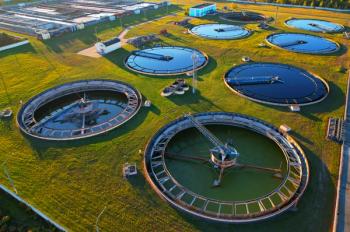
Using Chromatography to Explore Fluorescent Bioactive Compounds in the Coelomic Fluid of Earthworms
A study aiming to identify fluorescent bioactive compounds in the coelomic fluid of earthworms, as well as to investigate their structural and functional characteristics for possible use in biomedical applications, utilized a variety of chromatographic techniques.
A joint study between the Sathyabama Institute of Science and Technology (Tamil Nadu, India) and the Rajiv Gandhi Centre for Biotechnology (Kerala, India) was designed to identify fluorescent bioactive compounds in the coelomic fluid (CF) of earthworms (Perionyx excavatus). The team of scientists investigated the compounds’ structural and functional characteristics for potential use in biomedical applications. The fluorescent bioactive compounds present in the coelomic fluid were identified using thin layer chromatography (TLC), ultraviolet (UV)-visible spectrophotometry, and spectrofluorometry techniques. Furthermore, gas chromatography-mass spectrometry (GC-MS) and liquid chromatography-mass spectrometry (LC-MS) analyses provided a detailed list of bioactive compound present in the coelomic fluid. A paper based on this study was recently published in the Journal of Oleo Science (1).
Earthworms have been used in the traditional medicine of China for at least 2300 years (2). Extracts from their tissues have showed anti-microbial, anti-inflammatory, and anti-tumor properties (3), and protease isolated from them acts as a treatment for thrombosis and fibrosis (4). Furthermore, earthworms have been used as a skin model in the study of spidroin, a protein that makes up spider silk and promotes wound healing (5,6). In addition to these medicinal qualities, the earthworm has the capability to completely regenerate their head and tail segments within 25 days of their amputation, making it an ideal animal model for regeneration research (7).
The authors state that the coelomic fluid of P. excavatus they analyzed contained two unknown groups of fluorophores (designated as fluorescent compound A [CFA] and fluorescent compound B [CFB]), which they then separated and characterized based on their emission spectra. The fluorophore present in the earthworm coelomic fluids were characterized through UV spectrophotometry analysis, spectrofluorimetric analysis, GC-MS, and LC-MS, and Fourier transform-infrared spectroscopy (FT-IR). The latter technique confirming the decomposition of various functional groups (8), as well as the presence or absence of spectral bands and spectral shifts of different functional groups in the infrared spectra revealed mineralization (9). It is the opinion of the authors, as well as outside sources, that the identification of these functional groups by FT-IR suggests their contribution to fluorescence (10).
Without a standard, the analysts characterized CFA and CFB using GC-MS and LC-MS. Although the fluorescence compounds were unknown, certain compounds within CFA and CFB have been identified through GC-MS (compounds with anti-convulsant properties and a few known compounds used in the production of cosmetics and personal care products) and LC-MS analysis (compounds including alkylating and anti-neoplastic agents, toxic steroidal alkaloids, and polyvalent chelating agents). These findings, the authors stated, show the richness and the potential biomedical applications of CF (1).
GC-MS and LC-MSanalysis additionally revealed the profiles of bioactive compounds present in the coelomic fluid. Functional characterization, such as antibacterial activity, toxicity analysis, and in-vitro wound healing assays, showed positive results for indole and arachidonic acid, respectively. Based on these results, the authors report that these bioactive compounds are potential sources of therapeutic applications in the biomedical sciences (1).
References
1. Venkatachalam, S.; Christyraj, J. R. S. S.; Christyraj, J. D. S.; Subramaniam, R.;Mathews, M. G. R.; Anandharaj, J. L.; Venkatachalam, K.; Kalimuthu, K.; Yesudhason, B. V. Exploring the Fluorescence Bioactive Compounds in the Coelomic Fluid of Earthworms: Insights into Their Structural, Spectroscopic, and Functional Properties for Biomedical Applications. J. Oleo. Sci. 2025, 74 (2), 203-220. DOI:
2. Sun, Z. Earthworm as a Biopharmaceutical: From Traditional to Precise. Eur. J. Biomed. Res. 2015, 1, 28-35. DOI:
3. Zhu, Z.; Deng, X.; Xie, W.; Li, H.; Li, Y.; Deng, Z. Pharmacological Effects of Bioactive Agents in Earthworm Extract: A Comprehensive Review. Animal Model. Exp. Med. 2024, 7, 653-672. DOI:
4. Wang, X.-M.; Fan, S.-C.; Chen, Y.; Ma, X.-F.; He, R.-Q. Earthworm Protease in Anti-thrombosis and Anti-fibrosis. Biochim. Biophys. Acta (BBA) Gen. Subj. 2019, 1863, 379-383. DOI:
5. Abd Ellah, N.H.; Abd El-Aziz, F.E.A.; Abouelmagd, S.A.; Abd El-Hamid, B.N.; Hetta, H.F. Spidroin in Carbopolbased Gel Promotes Wound Healing in Earthworm’s Skin Model. Drug Dev. Res. 2019, 80, 1051-1061. DOI:
6. Spidroins. Science Direct website (accessed 2025-01-30)
7. Paul, S.; Balakrishnan, S.; Arumugaperumal, A.; Lathakumari, S.; Syamala, S.S. et al. Importance of Clitellar Tissue in the Regeneration Ability of Earthworm Eudrilus eugeniae. Funct. Integr. Genomics 2022, 22, 1-32. DOI:
8. Gupta, R.; Garg, V.K. Vermiremediation and Nutrient Recovery of Non-Recyclable Paper Waste employing Eisenia fetida. J. Hazard. Mater. 2009, 162, 430-439.DOI:
9. Sharma, K.; Garg, V.K. Comparative Analysis of Vermicompost Quality Produced from Rice Straw and Paper Waste Employing Earthworm Eisenia fetida(Sav.) Bioresour. Technol. 2018, 250, 708-715. DOI:
10. Karthikeyan, S. Spectroscopic Study of Characterization of Commercial Drug and its Mixture. Proc. Indian Natn. Sci. Acad. 2013, 357-363. DOI:
Newsletter
Join the global community of analytical scientists who trust LCGC for insights on the latest techniques, trends, and expert solutions in chromatography.





